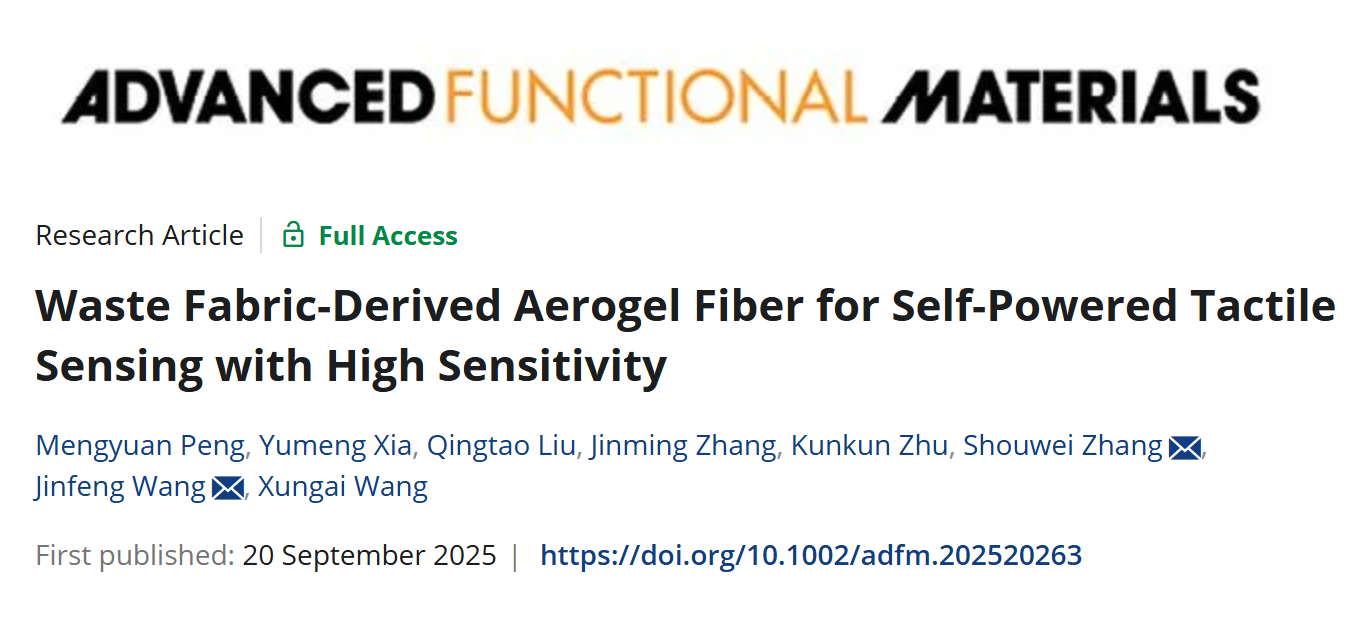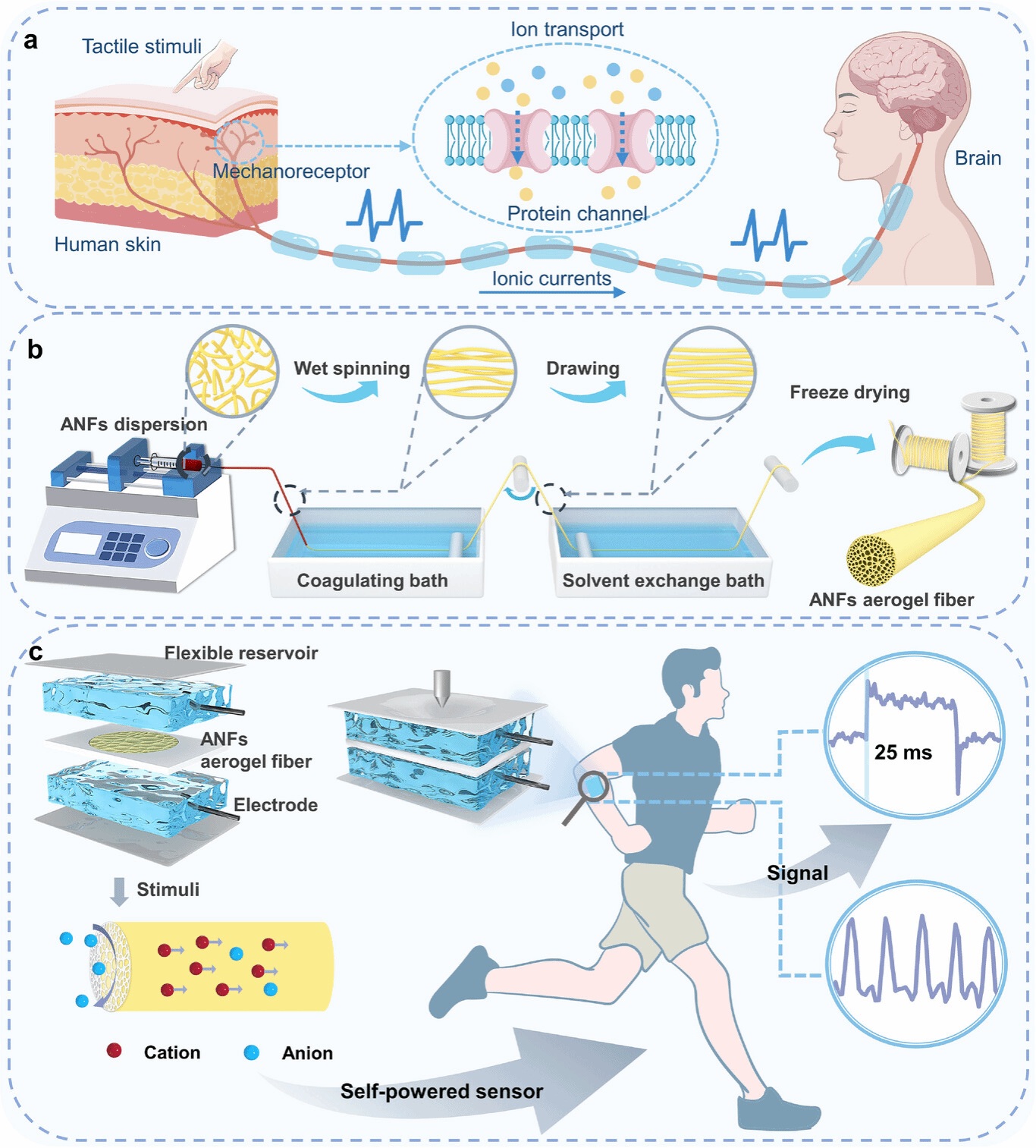Recently, a research team led by Professor Wang Jinfeng and Dr. Zhang Shouwei from the National and Local Joint Engineering Laboratory at Wuhan Textile University has achieved significant advancements in the resource utilization of waste textiles. The team successfully converted waste aramid fabric into aramid nanofiber aerogel fibers featuring a three-dimensional nanoporous architecture, enabling efficient osmotic energy conversion and self-powered tactile sensing. The research achievement were published in the prestigious international journal Advanced Functional Materials under the title "Waste Fabric-Derived Aerogel Fiber for Self-Powered Tactile Sensing with High Sensitivity" (DOI: https://doi.org/10.1002/adfm.202520263). Wuhan Textile University is the first-affiliated institution, with Mengyuan Peng, a master’s student at the Institute of Technology, serving as the first author, and Dr. Shouwei Zhang and Professor Jinfeng Wang as the corresponding authors.

By employing wet-spinning and freeze-drying techniques, the team fabricated uniform aerogel fibers with well-defined nanoporous structures from recycled aramid fabric. Inspired by bionic designs of self-powered sensors, the system mimics the mechanism of mechanoreceptors in human skin that transduce mechanical stimuli into ionic current signals. During fabrication, aramid nanofibers reestablished hydrogen bonding within the coagulation bath, forming a robust three-dimensional network. When encapsulated in polydimethylsiloxane (PDMS), the resulting aerogel fibers selectively drive cation migration under mechanical stress, generating measurable electrical signals—enabling high-sensitivity tactile perception without external power sources. The device demonstrated exceptionally low internal resistance (~10 kΩ) under a 500-fold NaCl concentration gradient, achieving a maximum output power density of 17.6 W/m², a rapid response time of 25 ms, and an ultra-low detection limit of 0.2 mN, highlighting its potential for real-time motion monitoring and wearable sensing applications.

Dr. Shouwei Zhang received his Ph.D. from Université catholique de Louvain, Belgium, and subsequently completed postdoctoral research at the University of Notre Dame (USA) and China University of Geosciences (Wuhan). In 2022, he joined Professor Wang Jinfeng’s group at the National and Local Joint Engineering Laboratory of Advanced Spinning, Weaving and Clean Production, where his research focuses on the functionalization of nanofiber-based porous membranes and their applications in ion sieving, biosensing, environmental monitoring, and energy harvesting. To date, he has authored or co-authored 15 SCI-indexed publications as first or corresponding author in leading scientific journals, including J. Am. Chem. Soc., Adv. Funct. Mater., Matter, Anal. Chem., and ACS Applied Materials & Interfaces.
